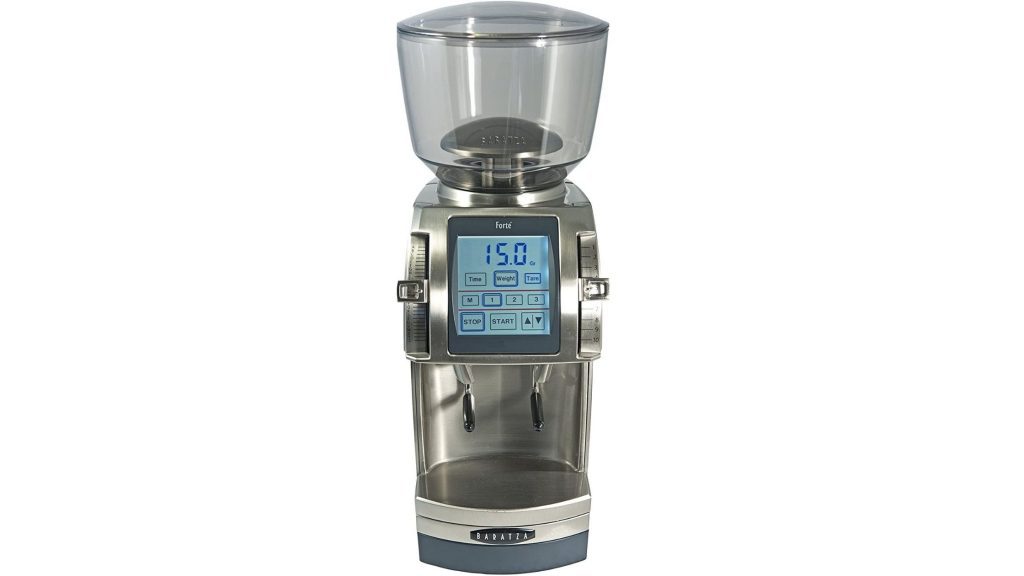Buying your coffee beans and grinding them at home means enjoying good, fresh coffee at all times. Indeed, when you buy your coffee from a roaster or in a coffee shop. Then you ask to grind it on the spot. So we advise you to consume it very quickly, generally within two weeks.
Why? When coffee is ground, it oxidizes faster. Because the contact surface between the air and the coffee is greater than for coffee beans. The aromas, therefore, fly much faster, which is a shame when choosing a quality coffee!
Grinding your coffee as it is consumed is therefore ideal for preserving the freshness of its aromas. It remains to be seen which coffee grinder to choose to fulfill this mission.
WHAT IS A GOOD MILL?
A good mill should deliver a grind. It is precise enough for the extraction method chosen and sufficiently homogeneous for each use. Indeed, if your grind is not the right size or has too many particles of different sizes, your coffee will not be brewed correctly.
That being said, there is no such thing as the perfect grinder with 100% even grind. But there are many models on the market. These are still good options for those who want to enjoy a great cup of home-ground coffee. But then, which mill to choose?
BLADE MILL OR GRINDING WHEEL MILL?
So there is not even a match: always prefer a millstone. We explain why.
BLADE MILL
Your grandmother’s blade mill may be pretty, but it has two major drawbacks:
It does not allow you to adjust the size of the grind precisely:
The idea is that the longer you grind, the more the grind becomes finer, but you sail entirely on sight. And vagueness never made a good coffee.
The grind is not homogeneous:
The blades cut the coffee beans into several parts, resulting in an uneven distribution of particles. Some are very small and others much larger.
The blade mill will therefore make it difficult for you to vary the extraction methods. And you will also end up with an irregular grinding, sometimes fine in places, sometimes coarser. The result? Unevenly brewed and super bitter coffee.
The choice of a grinding mill is therefore a first real criterion to take into account. Afterward, there is no need to wonder too much about the type of grinding wheels.
– flat or conical
– and the material in which they are made –
steel or ceramic
both are suitable for use at home.
But for the more curious among you, we quickly explain the specification of each.
GRINDING WHEEL
As opposed to blade mills, there are therefore mills equipped with grinding wheels, one fixed. Besides, the other activities are connected to a motor. Rather than slicing coffee beans like a bladed grinder would, the burr grinder grinds them:
As the force isn’t focused on a specific point, the grind tends to be more even. You will always find particles finer than others.
But the general homogeneity will remain much higher than the grinding obtained with a blade mill. The grinding mills can be fitted with flat grinding wheels or conical grinding wheels. But what is the difference?
FLAT GRINDING MILL
Advantages :
Homogeneity and freshness of the grinding because little ground coffee remains stuck in the grinder, speed, quieter
Cons :
These grinders are generally bulkier and a bit more expensive
CONICAL GRINDING WHEEL
Advantages :
Good grinding quality thanks to a slower rotation of the grinders than for flat grinders. They have the benefit of avoiding overheating of the grind, affordable price, compact grinder
Cons :
These mills are a bit noisier and slower. Also, pay attention to the freshness of the grind that remains stuck in the grinder, remember to expel it if the grinder is not used in the following ten minutes.
These two types of grinding wheels therefore each have their own strengths. But be aware that for domestic use, both will be equally suitable. And if you want to take it a step further, we can also compare the two types of materials in which the grinding wheels are made: steel and ceramic.
STEEL OR CERAMIC GRINDING WHEELS: WHAT’S THE DIFFERENCE?
The main difference is related to thermal conductivity. Steel is a good thermal conductor, which means that the grinding wheels will heat up and cool down faster, an important criterion for professionals in the sector. Ceramic grinding wheels have lower thermal conductivity; it will take them longer to warm up but also to cool down.
On the other hand, ceramic grinding wheels are almost indestructible but they are also more expensive and more fragile. However, for home use, their greater fragility will not be a problem unless you send something other than coffee beans in your hopper (like a large stone for example, but there is little chance that this will happen). And to be completely honest, choosing one or the other material won’t impact the taste of your coffee.
Thus, the choices between the types of grinding wheels or the material mainly concern high-flow professionals, for whom the conductivity or the risk of breakage is important criteria. For your home mill, on the other hand, you don’t need to worry about comparing these elements because the result will be the same. On the other hand, the real question to ask yourself will rather concern the type of grinder: a manual coffee grinder or electric coffee grinder?
THE MANUAL COFFEE GRINDER
When we think of the manual coffee grinder, we immediately think of the Peugeot coffee grinder that we regularly find on flea market stalls. Launched in 1840 before the company began selling cars, these cubic-shaped wooden grinders quickly gained notoriety and became the symbol of the domestic coffee grinder. Since then, a number of improved models have emerged with several advantages:
Benefits :
It’s economical :
No need to sell a kidney to afford a manual coffee grinder whose prices start at around thirty euros for a plastic model.
It’s practical :
Light and relatively small, a manual coffee grinder is easy to use and can be taken everywhere with you, on weekends at the sea or on a hike.
It is ideal for making filter coffee :
The manual coffee grinder is suitable for all filter techniques, from Bialetti to French Press.
Disadvantages:
Not suitable for espresso:
the manual coffee grinder does not allow you to obtain a sufficiently fine grind to obtain a good espresso.
Limitation in the amount of coffee that can be ground :
This depends of course on the models but the receptacle of a manual coffee grinder does not allow grinding a very large quantity of coffee unlike electric grinders with a large reservoir.
The Hario Slim manual grinder is ideal for making filter coffee at home, regardless of the method, and will even allow you to exercise your arms: grinding a dose of coffee will take you between one and two minutes. And two minutes of the sport while making your coffee is always a winner.
The plus:
No scale is needed with the Hario Slim grinder, fill it 2cm from the edge and you will get around 30g of coffee (photo on the left). All stack for a Chemex or a Kalita of 500ml. And for 15g, pour coffee up to the edge of the arches (photo on the right).
To know also-best budget coffee grinder
THE ELECTRIC COFFEE GRINDER
The electric coffee grinder was born almost a century after the manual grinder, from the spirit of Jean Mantelet, future founder of… Moulinex. You can see two main advantages over the manual coffee grinder:
Benefits :
It allows greater grinding precision: electric coffee grinders offer a greater amplitude in the fineness of the grinding. It preserves your biceps: as its name suggests, the electric coffee grinder is… electric. Ideal for those who don’t have time in the morning, and for lazy people.
Disadvantages:
The price: buying an electric coffee grinder is a bigger investment than buying a manual coffee grinder
Noise: the hum of an electric mill is likely to wake your other half in the morning (especially if you start your day at 6 a.m.).
CHOOSING THE RIGHT ESPRESSO GRINDER

Not all electric grinders can make espresso, at least a good espresso. You should therefore be sure to check this point if you plan to buy a grinder to make espresso at home.
The Encore Baratza Electric Mill is a good option. Entry-level, its conical grinders offer 40 different adjustment steps with a graduation system that will allow you to adapt your grind size to all filter methods. However, it is not recommended for making espresso because the degree of fineness leaves something to be desired unless you have a pressurized filter (with a single outlet hole unlike the classic filter).
The Sette 270 electric grinder from Baratza represents the above range: resembling a professional grinder, it offers a more efficient motor and a more precise and homogeneous grinding, allowing you to enjoy a good espresso and more. ‘any filter method. Thanks to its control panel, it also allows you to program different weights depending on the methods you use: a welcome time-saver in the event of a rushed morning!
So, to choose the right household coffee grinder:
Runaway from the blade mill
You should not do the comparison between the types of grinding wheels (shape or material)
Choose a manual coffee grinder if you only make filter coffee, are on a budget, and want to make coffee everywhere, even in the mountains.
Opt for an electric coffee grinder if you make espresso, if you don’t want to waste time in the morning or if you want super precise grinding (and your wallet allows you).
Great, you are now ready to make great, fresh coffee at home! But by the way, do you know that the water you use is also an important criterion? To find out more, it’s here
